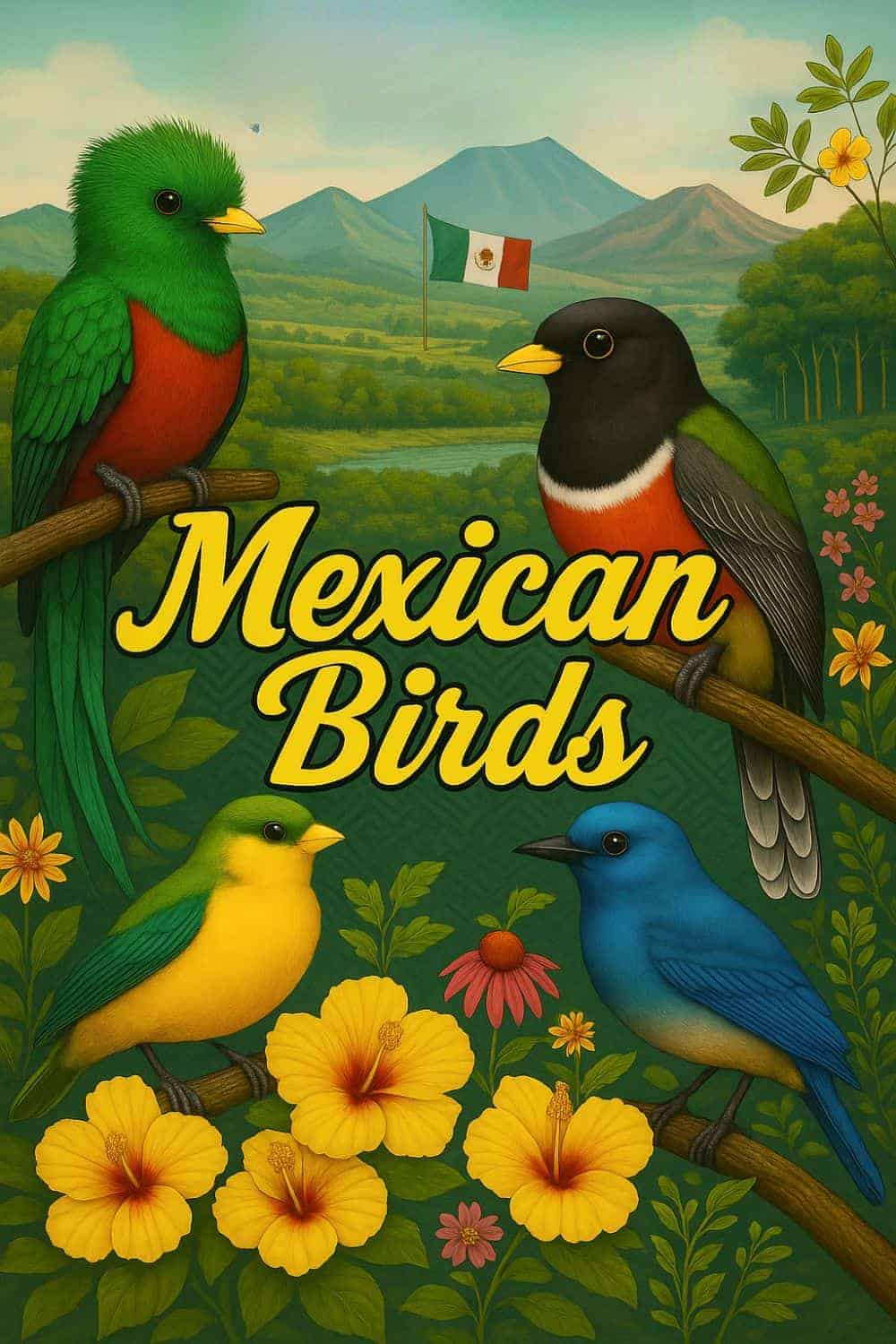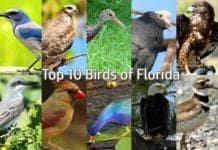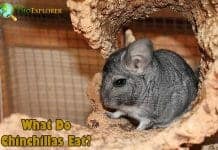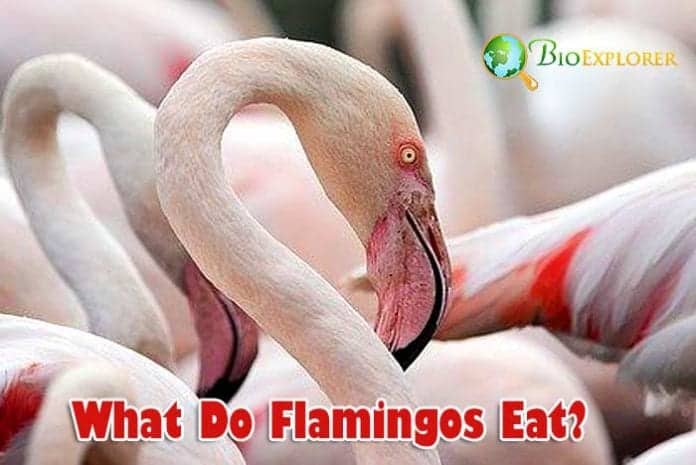
Flamingoes are beautiful wading birds classified in the family Phoenicopteridae. These pink birds are omnivores. A typical flamingo diet consists of blue-green algae, brine shrimp, small insects, insect larvae, crustaceans, and some mollusks.
Note: The acceptable plural forms of flamingo are flamingoes or flamingos
The word “flamingo” is derived from a Portuguese word – flamengo which means “Flame-colored”.
What Do Flamingoes Eat?
| Greater Flamingo | Phoenicopterus roseus | Fly larvae, plankton, crabs, mollusks, and small fish. |
| Lesser Flamingo | Phoenicopterus minor | Alkaliphilic Limnospira fusiformis |
| The American Flamingo | Phoenicopterus ruber | Algae, aquatic invertebrates, mollusks, seeds, shrimp, and fly larvae. |
![]()
What do flamingos eat to get their pink hue?
Flamingos were born with dull gray feathers. Their feathers gradually turn pink due to a natural pink dye named Canthaxanthin derived from flamingos’ diet (Brine Shrimp and Blue-green Algae).
![]()
Flamingoes Diet by Types
Six extant flamingo species have been described so far. Two of these species are called Old World Flamingos, while the other four are known as New World flamingoes.
Old World flamingoes are found in the Afro-Eurasia region, while the new world Flamingos are located in the Americas.
This section will look at examples of the Old World and New World Flamingos.
![]()
Old World Flamingos
What Do Greater Flamingoes Eat?
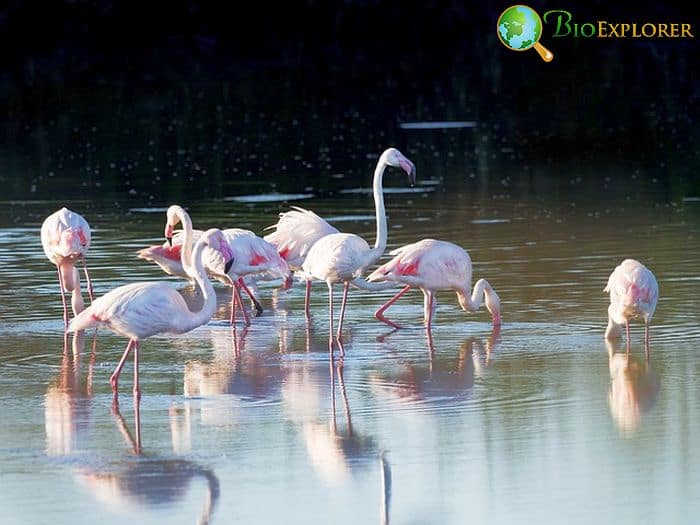
The greater flamingo is an omnivore whose diet mainly consists of fly larvae, plankton, crabs, mollusks, and small fish.
| Animalia | Phoenicopteriformes | Phoenicopteridae | Phoenicopterus | Phoenicopterus roseus |
- The greater flamingo finds its prey by using its feet to stir the bottom of shallow water or muddy pools.
- Once it does this, the greater flamingo then buries its beak or entire head in the water or muddy flats where it sucks the mud and water to gain access to its food.
- The greater flamingo then uses its filter-like structures in its beak to separate its food from water and mud before consuming it.
The greater flamingo is larger compared to the lesser flamingo, and it can be found in almost every continent, particularly in warm aquatic environments.
- These tall pink birds are notable for their long, thin, curved necks.
- Their black-tipped beaks have a distinctive look, considering their bend downwards.
![]()
What Do Lesser Flamingos Eat?
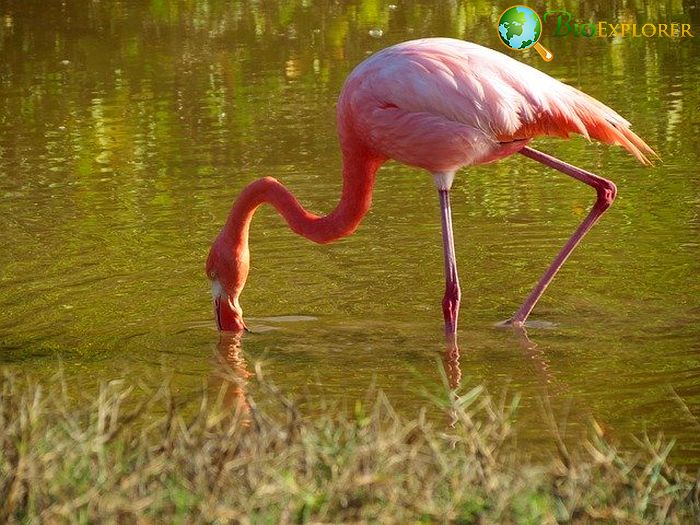
The lesser flamingo is an omnivore whose primary source of nutrients is drawn from the microscopic alkaliphilic Limnospira fusiformis.
| Animalia | Phoenicopteriformes | Phoenicopteridae | Phoenicopterus | Phoenicopterus minor |
- The earlier mentioned cyanobacteria are rich in protein and also contain great portions of carbohydrates and lipids.
- In addition to consuming cyanobacteria, the lesser flamingos also dine on algae, copepods, and benthic diatoms, and planktons.
- Like the greater flamingo, the lesser flamingo uses filter-feeding as its hunting strategy.
- This flamingo first stirs the bottom of shallow water and muddy pools before inverting their heads in water to catch prey.
- Interestingly, the lesser flamingos feed about 68.35% of their day.
- The lesser flamingo is described as one of the brightest and smallest flamingo species.
- This flamingo can grow to 0.8-0.9 meters tall, with the females slightly shorter than the males. The lesser flamingo averages a weight of between 1.5 and 2.0 kg.
![]()
New World Flamingos
What Do American Flamingoes Eat?
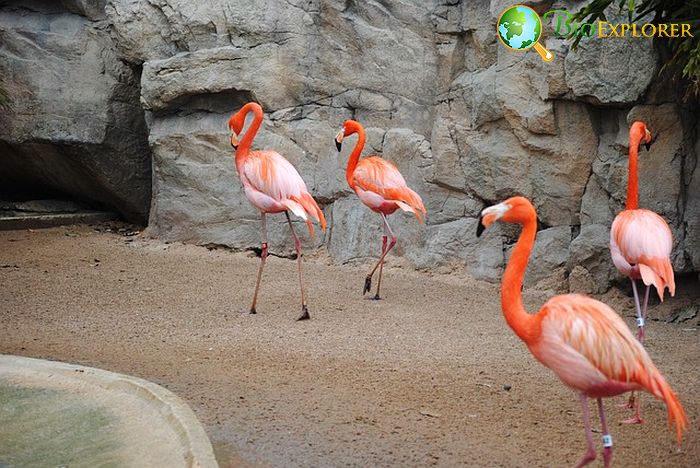
The American flamingo feeds on algae, aquatic invertebrates, mollusks, seeds, shrimp, and fly larvae.
| Animalia | Phoenicopteriformes | Phoenicopteridae | Phoenicopterus | Phoenicopterus ruber |
- The hunting strategy used by the American flamingo is filter-feeding facilitated by its tongue action.
- This flamingo first stirs up the bottom of the shallow water and mudflats while wading and then inverts its head into the water and mud pools to engage in filter-feeding.
- The American flamingo is considered one of the largest flamingo species.
- The average height of an adult American flamingo is about 1.5 meters tall and weighs anything between 1.8 to 3.6 kg.
![]()
When Do Flamingoes Eat?
Flamingos tend to display different activity tendencies.
- For example, the American and the greater flamingos show diurnal tendencies, which means they are active during the day and will thus be found foraging during daylight hours.
- The lesser flamingo displays crepuscular tendencies, which means it is likely to be found feeding at dusk and dawn.
![]()
How Often Do Flamingoes Eat?
Flamingos can feed as often as they can as long as they achieve their daily energy needs. For example, the lesser flamingo can consume about 72 grams of cyanobacteria bacteria every day.
![]()
What Eats Flamingos?
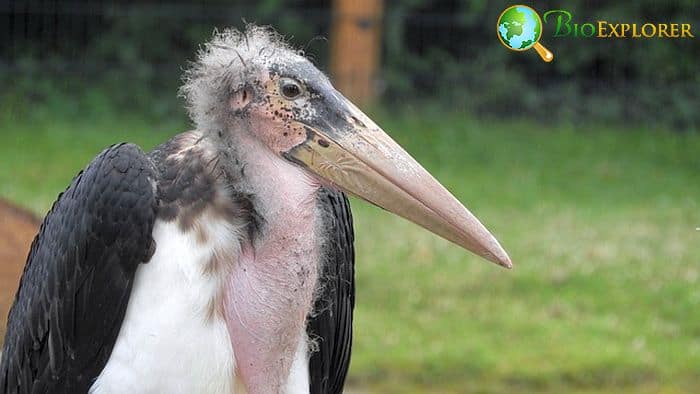
Flamingos have a limited number of predators in their natural habitats. This could be explained by the fact that they flock together, thus promoting their safety from potential predators. However, flamingo eggs and chicks are targeted by organisms such as some gull species, African fish eagles, badgers, Marabou storks, foxes, some Vultures (such as Black Vulture), and boars.
![]()
Where Do Flamingoes Fit in the Animal Food Chain?
Flamingoes are essential to the animal food chain as both prey and predators.
- As predators, flamingos dine on a vast range of small organisms, helping keep their local populations under check.
- The juvenile flamingos and flamingo eggs are a great source of nutrients to the creatures that hunt them.
![]()



